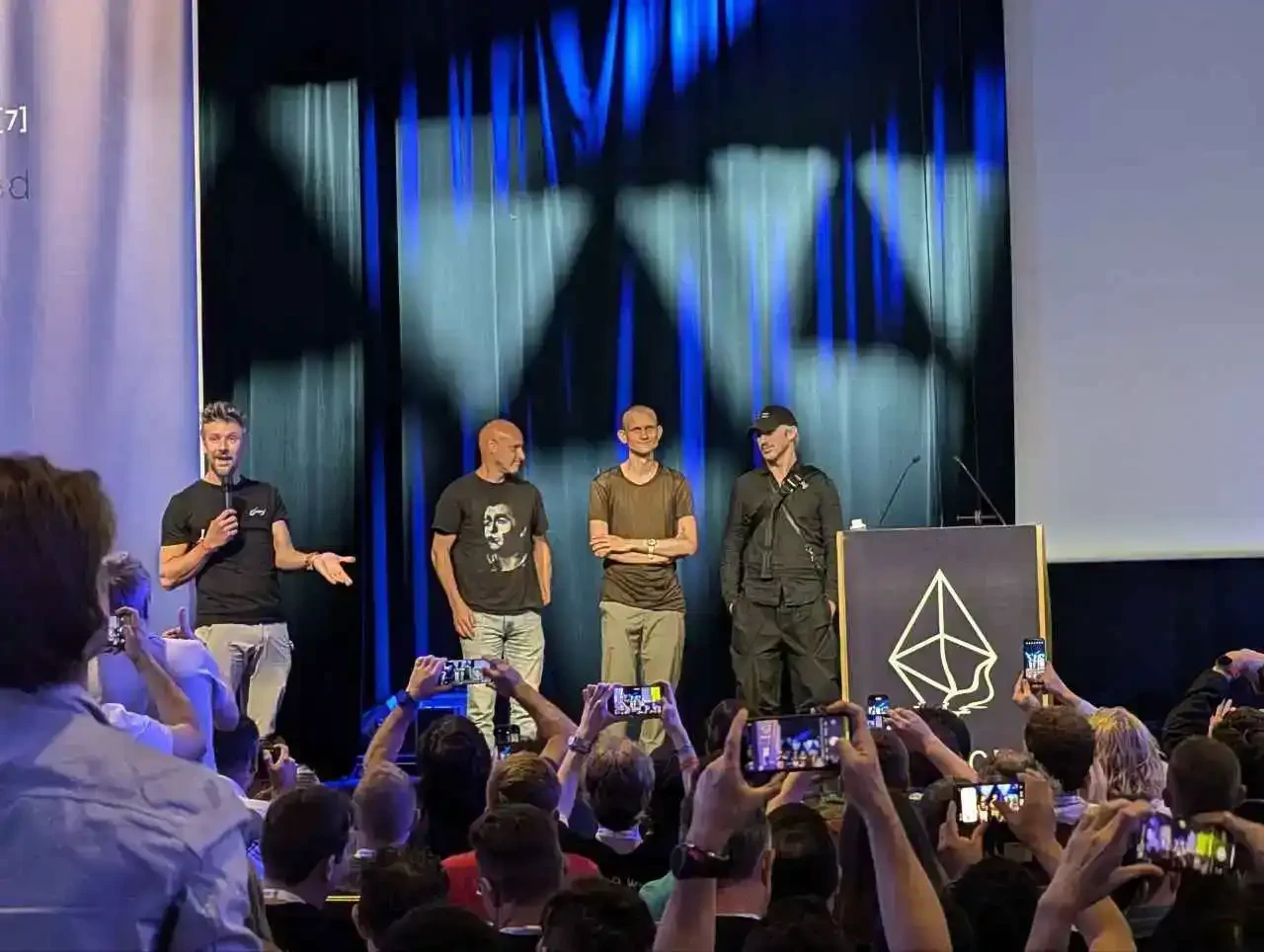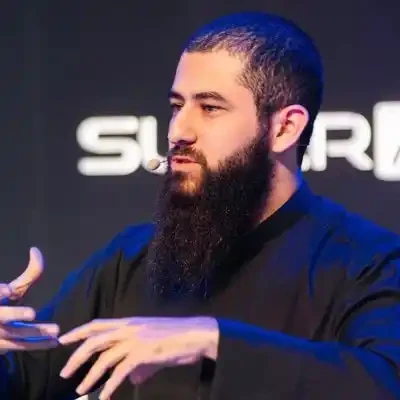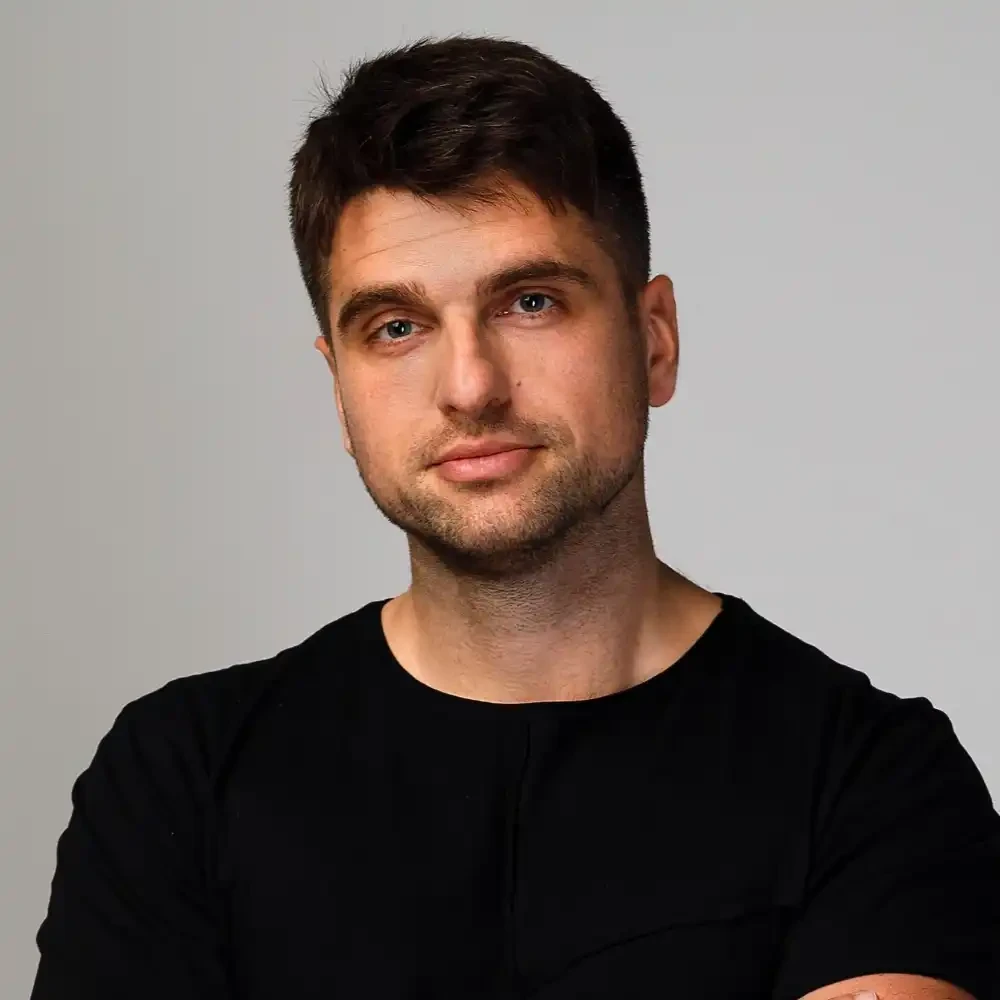The “disappeared” founders of the king-level encryption projectsRecommended Articles
Whether it’s Vitalik’s geekiness, Jeff Yan’s trader’s intuition, or Do Kwon’s arrogance, they all define the soul of the project to some extent. However, in the past few years, these “kripto star founders” have faded from the stage one after another.
Story Protocol founder Jason Zhao recently announced his resignation as CEO, reigniting the discussion. A young Korean-American, a startup graduate from MIT summer camp, a student in Fei-Fei Li’s lab, and the youngest product manager at DeepMind—his story could have led to a star turn in Silicon Valley. Instead, he chose to write his own story in the crypto industry, and after three and a half years, he decided to leave.
BlockBeats has compiled a list of seven “disappeared” founders. Some took the initiative to turn around, while others were forced to withdraw; some bid a gentle farewell with idealism, while others made a hasty exit amid scandals and controversies… Of course, they are just a microcosm. There will definitely be more and more founders who leave after issuing coins and start their next life, which should be pretty good.
From “metaphysics” to “reality” – Other people’s children
On August 16th, Jason Zhao posted an emotional post on X, announcing that he would be stepping down as full-time CEO of Story three and a half years after founding it, becoming a strategic advisor and dedicating himself to his new AI project, Poseidon (which had just received $15 million in seed funding from a16z last month). He said the new industrial revolution in cutting-edge fields like space and life sciences had reignited his passion. However, the post, which had been viewed by 5 million people, received only 2,000 likes.
Jason Zhao, a Korean American, grew up in Austin, Texas. During high school, Jason began to be in charge of the local TED x Austin Youth. At the age of 19, when he attended the MIT Launch training camp, he and his companions founded the political lobbying crowdfunding platform PolitiFund . With an SAT score of 2400, he chose Stanford University among almost all the full scholarship invitations from Ivy League schools.

After earning a bachelor’s degree in philosophy from Stanford University, he pursued a master’s in computer science, focusing on artificial intelligence research. He studied under the “godmother of AI,” Fei-Fei Li, in the Computer Vision Lab. After graduation, he joined Google’s AI lab, DeepMind, becoming its youngest product manager. With this scenario, he would have been a winner in every sense of the word. If he were still working at a major AI company, he might have received a “high-paying transfer” offer from Zuckerberg. But fate didn’t allow him to follow that path.

The 2020 “DeFi Summer” introduced him to blockchain. His background in philosophy and artificial intelligence led him to the idea that “AI reshapes creativity and enriches content, while blockchain determines digital property rights and grants verifiable scarcity to data.” This combination of IP, AI, and blockchain led to the birth of Story Protocol, a project that successfully raised $140 million at the age of 25. By making intellectual property (IP) programmable and tracking its use and distribution on-chain, it is driving new business models such as creator royalties, licensing, and AI training.
They launched Story Academy to promote the Builder Program for entrepreneurs and developers. They also partnered with Yakoa to use AI to detect IP duplication and manipulation; integrated with Pastel Network to ensure certificate rarity and asset scarcity; collaborated with Lit Protocol to enhance transaction security and privacy; and partnered with Stability AI to integrate on-chain authorization and copyright tracking into AI model training.

Story’s business logic, source: Starzqeth
However, the “application-based” product that links the chain with the entity, although a grand narrative, does not seem to be in line with the current trend of Crypto. In the six months after TGE, they cooperated with well-known brands such as Justin Bieber, BTS, BlackPink, Adidas, Crocs, etc. But this did not change the fact that Story Chain’s revenue was mostly in the single or double digits. Well-known venture capital analyst Adam Cochran pointed out that compared with this revenue with a fully diluted valuation of nearly US$6 billion, he questioned whether the project was more focused on “fancy demonstrations.”

But in reality, Story still enjoyed the trust of investors before Zhao’s exit. Grayscale launched the Story IP Trust, and Heritage Distilling Holding Company (CASK) launched its IP DAT program with $220 million in private equity financing, bringing the IP’s market value to a new high upon his departure. His departure may not have been dignified, but it wasn’t embarrassing either. Perhaps for this young man, who had already completed half of others’ lives before the age of 26, this journey shifted his inner leanings from Plato to Aristotle, from IP to the more practical construction of physical AI. He plunged into a new world, perhaps with even greater possibilities still waiting for him to explore.

Jason’s “X” Banner – Raphael’s “The School of Athens”, left: Plato’s finger pointing up “Idea/Metaphysics”, right: Aristotle’s palm facing down “Experience/Real Order”
Haven’t heard from Gavin Wood for a long time…
“I wonder where Gavin Wood is now.”
As Ethereum once again hit $4,000, some people suddenly remembered Gavin Wood, one of Ethereum’s most core early co-founders, author of the Ethereum Yellow Paper, creator of the Solidity language, and founder of Polkadot. His voice seemed to have been missing from the crypto world for a while.
In October 2022, Gavin Wood announced his resignation as CEO of Parity Technologies. This marked his departure from Polkadot. This marked his second exit from Polkadot, following Ethereum.
Gavin Wood was born in Lancaster, England. He holds a PhD from the University of Cambridge, specializing in music visualization and human-computer interaction. Before entering the world of crypto, he was a researcher at Microsoft and an active contributor to multiple open source communities.

In 2013, he met Vitalik Buterin and became one of Ethereum’s earliest co-founders. He not only wrote the first version of Ethereum’s Yellow Paper, but also personally implemented the first Ethereum client and invented the Solidity language. It can be said that he laid the initial foundation for the usability of “smart contracts.”
However, in 2016, he chose to leave Ethereum due to ideological differences. He envisioned blockchain as more than just a single virtual machine operating environment, but a multi-chain interconnected world. This ideal eventually became Polkadot. In 2017, Gavin Wood co-founded Parity Technologies with Björn Wagner and others, subsequently driving the design and implementation of Polkadot. His proposed Substrate framework makes blockchain construction as easy as “assembling Lego blocks.” Polkadot’s relay chain and parachain design seek to address the issues of multi-chain interoperability and shared security.
In some ways, Gavin Wood resembles his former close friend Vitalik. Within the Polkadot community, Wood has long been the most iconic engineer. He’s more of an architect and thinker than a manager. He excels at writing code, documentation, and manifestos, but not at managing large teams and complex stakeholder relationships.
Therefore, in October 2022, Gavin Wood announced his resignation as CEO of Parity Technologies, handing the position to Björn Wagner. “The role of CEO has never been something I’ve always dreamed of. I can be a good CEO for a while, but it’s not where I’ll find lasting happiness.” This statement is full of typical engineer idealism.
Gavin Wood’s last two public appearances were also quite interesting: one was at the EthCC 7 conference in Brussels in July 2024, where he posed for a photo with Vitalik Buterin, Joseph Lubin, and two other core Ethereum founders; another was at the Polkadot developer bootcamp, where he took the DJ booth and rediscovered his passion for music. Perhaps this was Gavin Wood at his most comfortable.

After leaving EOS, BM is studying theology.
“Let’s look at EOS again in seven years.” Li Xiaolai’s words back then still have great value, and now they have come true in some way.
In 2025, seven years after its original agreement, the EOS community spun off its parent company, Block.one, which had raised over $4 billion in funding for EOS, trading it for 160,000 mata uang kriptos. Block.one channeled this massive liquidity to a new trading platform, Bullish. Born with a silver spoon in its mouth, Bullish became the second cryptocurrency exchange to be listed in the US, after Coinbase, with a market capitalization of approximately $10 billion.
As if to break with the past, the EOS token has now been renamed A, with a current market capitalization of $321 million, less than one-twentieth of Bullish’s. Daniel Larimer, a key figure in EOS at the time, resigned from his position as CTO of Block.one in 2020. In the crypto industry, Daniel Larimer is better known as “BM.”

Born in Virginia, USA, BM is a staunch libertarian. He claims that his most admired book is “Atlas Shrugged” and believes that free markets and anti-censorship technology tools can protect individual life, property, and freedom.
After entering the crypto industry, he created projects at a very fast pace: in 2009, he tried to develop a crypto exchange; in 2013, he founded BitShares, which introduced early models of decentralized exchanges (DEX) and stablecoins; in 2016, he founded Steemit, promoting the first large-scale experiment of “blockchain social”; in 2017, he made another move and joined Brendan Blumer (BB for short) to establish Block.one and launch EOS.
At Block.one, BB’s “family business,” BB’s sister was parachuted into the role of Chief Pasaring Officer. Her only visible achievement was changing the EOS brand color from tech blue to a softer Morandi gray. BB’s mother runs a venture capital fund, and the social app Voice, which she led, had fewer than 10,000 users within a year of its launch, yet cost $150 million to invest.
BM had minimal say, even jokingly claiming on Twitter that he had “no decision-making power.” This co-founder, known as a “genius programmer,” became a shadowy figure within the parent company. Consequently, in 2021, the EOS community launched a “fork uprising” in an attempt to sever Block.one’s control. BM resigned as Block.one CTO and left the community.
Since then, BM’s personal footprints have become vague, and he rarely publishes content related to encryption. In the past two years, his Twitter content has been highly concentrated on interpretation of the Bible, doomsday prophecies of geopolitical conflicts, and criticism of mainstream Christianity.
Dirty behind-the-scenes operations
“Who messed up Movement?” When the MOVE token was delisted from Coinbase due to a scandal, many people began to question how the co-founder of Movement Labs, who was only in his early 20s and had once boasted at hackathons and podcasts that “Move would change the Ethereum security model,” could have left the center stage in such a dramatic way.
Rushi Manche was born in Illinois, USA, and majored in Computer Science and Data Science at Vanderbilt University. Like many Gen-Z, he was fascinated by hackathons, AI labs, and blockchain code bases during college. In 2022, he and his classmate Cooper Scanlon founded Movement Labs in their dormitory. The inspiration is actually not complicated. Their internship experience at Aptos made them see the potential of the Move language. A new smart contract language that is safer than Solidity and has parallel processing capabilities. But the limitations of Aptos are also obvious: lack of liquidity and limited developer base. So they came up with a bold idea of “bringing Move into Ethereum”

The startup quickly attracted the attention of investors. During the pre-seed phase, they secured $3.4 million from over a dozen angel investors. A year later, Movement Labs secured $38 million in Series A funding, with participation from renowned funds such as Polychain, Placeholder, and Archetype. Industry narratives portrayed Movement Labs as “the flagship project of the Move language in the EVM world.”
Rushi quickly became the face of Movement. He frequently appeared on podcasts, at tech conferences, and in industry interviews, exuding the typical enthusiasm of a young entrepreneur. With a brisk voice and rapid speech, he constantly exuded the confidence that “the industry needs new talent to reshape it.” Under his leadership, Movement Labs announced the development of M2 Rollup (ZK-based Move Layer 2) and the Shared Sequencer, among other infrastructure, aiming to become the next generation of Ethereum scaling solutions.
The MOVE token will be launched at the end of 2024. At the TGE, Rushi seemed to be truly at the center of the stage, but this was also where the problems began.
Shortly after the launch, community members questioned the airdrop list’s “predetermined” nature. Movement’s “shadow advisor,” Sam Thapaliya, revealed that over 75,000 wallets had been designated by co-founder Cooper, allowing them to insider-trade 60 million Move tokens, far exceeding the profits of ordinary users. Sam, however, was no pushover. Two subsequent business memoranda revealed that Movement Labs had signed agreements with two “shadow advisors,” including Sam Thapaliya, promising to provide up to 10% of the MOVE token supply (worth over $50 million). This marked the first crack in the project.
A few months later, the real storm arrived. In April 2025, CoinDesk revealed that Movement had signed a market-making agreement with Rentech, a little-known intermediary. Rentech gained control of 66 million MOVE tokens on the day of the TGE and sold approximately $38 million the following day, triggering a sharp drop in the token’s value. Binance even froze its accounts to quell the chaos. The contract further revealed that Rentech played a dual role in the transaction, acting as both an agent of the Movement Foundation and a subsidiary of Web 3 Port.
This was the last straw that broke the camel’s back.
On May 2, 2025, Movement Labs announced that Rushi Manche had been temporarily suspended. Five days later, he was officially removed from his co-founder role, with a new leadership team taking over. Rushi did not publicly respond to the announcement. His image suddenly shifted from a young engineer who touted the “blockchain security revolution” to the center of a token scandal.
Rushi’s exit seemed hasty and chaotic, even reminiscent of an expulsion. No one knows what exactly happened, with various parties claiming different accounts. Move was subsequently delisted by Coinbase, and Rushi sued Movement Labs in Delaware court, seeking clarification of responsibilities. To this day, Rushi’s last post is a repost of Sam’s business memo from May 8th. Similarly, the question of who botched Move remains largely unanswered. Like so many other blockchain projects, he left the stage of history, leaving behind only a mess.
From IO to OI, from “decentralized computing power” to “super AI”
When the IO token launched on Binance Launchpool, the crypto community kept asking, “Why did Ahmad Shadid suddenly step down?” This entrepreneur, with a background as an advisor to the Ethereum Foundation, was once one of the most high-profile founders in the Decentralized Token (Decrypted Token) space. On June 9, 2024, just two days before the IO token public offering, he suddenly announced his resignation as CEO of io.net on X, handing over the reins to COO Tory Green.

Ahmad Shadid’s story didn’t begin with GPUs or AI, but with quantitative analysis. He began as a data analyst at Cordoba Partnerships, a Saudi SME. He then worked as a quantitative systems engineer at ArabFolio Capital and Whales Trader, where he delved deeper into GPU-related technical expertise. In 2018, he began developing DarkTick, an ML-driven risk management engine. This tool uses quantitative and statistical techniques to develop and test highly automated quantitative trading strategies for stocks, non-stocks, and statistical arbitrage.
Since 2022, he has been providing consulting services to the Ethereum Foundation, focusing on the scalability of smart contracts and infrastructure. After the multi-chain and L2 narratives gradually matured, he turned his attention to another neglected area: computing power.
In 2023, the wave of generative AI swept the world. ChatGPT drove a surge in computing power, and GPU supply became the most scarce resource in Silicon Valley. Shadid keenly realized that if DeFi could liberate finance, DePIN could liberate physical resources. His answer was io.net, a network that connected idle GPUs and provided decentralized computing power for AI models.
In his narrative, IO wasn’t just a company, but “the world’s largest decentralized AI supercomputer.” This slogan quickly attracted the attention of investors and the community. From studios to cloud server providers, it suddenly seemed that everyone was “providing computing power” for IO. Related reading: ” io.net Goes Beyond the Circle: Who Pays for the AI Narrative? “
However, just before the token’s launch, Shadid resigned. “I’m resigning as CEO not because of external skepticism, but to allow the project to grow without interference,” he wrote on X. Prior to this, some in the community accused io.net of exaggerating its advertised GPU computing power, raising concerns that he might cash out.
Faced with these doubts, Shadid chose a transparent approach to the transaction: “Donating 1,000,000 IO tokens to the Internet GPU Foundation to promote ecosystem development, and emphasizing that all team, consultant, and investor tokens will have a four-year lock-up period, with partial unlocking beginning after June 2025.” Although this action sparked speculation, in the DePin industry, where “shady dealings are rampant,” the act of withdrawing from the donation seems quite transparent.

After leaving IO, he launched a new project, O.XYZ, with its governance token, OI, claiming it was a community-governed “sovereign super AI.” He also launched “Osol,” an index token for Solana AI (the tokens of the top 100 AI projects on Solana), and recently introduced “AI CEO.” However, his product promotional claims, such as “connecting over 100,000 AI models” and “20 times faster than competitors,” were met with community skepticism, and the project’s token’s market capitalization has plummeted. Perhaps after the market’s repeated disappointment with the “CryptoAI” narrative, Shadid’s popularity has faded.
Mihailo, the ZK evangelist who left Polygon
One morning in May 2025, Mihailo Bjelic decided to step down from the Polygon Foundation board and the day-to-day operations of Polygon Labs. This marked his official farewell to the project he had supported for eight years. For the crypto industry, this was the third Polygon co-founder to depart; for him personally, it was a departure tinged with both relief and disagreement.
Mihailo, originally from Serbia, studied Information Systems and Computer Science at the University of Belgrade. He entered the crypto world relatively early, first engaging with the Bitcoin and Ethereum communities in 2013 and becoming increasingly fascinated by the question of “how to make blockchain truly usable.” After graduation, he worked at a startup providing AI/machine learning solutions for the automotive industry and also experimented with several small software projects, but nothing truly ignited his passion. His true passion was finding answers in the maze of blockchain scaling.

In 2017, he met the team then known as Matic Network. Ethereum was experiencing network congestion caused by CryptoKitties, with high transaction fees and developers struggling. Mihailo saw this as a direction he could dedicate his entire passion to: developing a truly usable Ethereum scaling solution.
Within Polygon, Mihailo is known as the “ZK evangelist.” He spearheaded technical strategy, particularly the zero-knowledge proof (ZK) approach. Under his leadership, Polygon invested hundreds of millions of dollars in the acquisitions of Hermez and Mir, investing heavily in ZK technology and laying the foundation for the subsequent Polygon zkEVM.
He not only plays a role in technical development but also represents Polygon’s external narrative. Whether in podcasts, tech summits, or long-form articles for the research community, he is one of the voices telling Polygon’s story: Polygon is not just a sidechain, but a multi-chain universe, a key piece in Ethereum’s scaling landscape. He appears in media interviews and on the podium at developer conferences, acting as both an engineer and a promoter.
But as the project expanded and matured, cracks began to emerge. In 2023, Anurag Arjun, one of the four co-founders, left to build his own modular chain, Avail. In October of the same year, Jaynti Kanani, another co-founder, also announced her retirement from day-to-day operations. The founders’ once close camaraderie was gradually diluted by the passage of time and the growing complexity of the project.
Two years later, Mihailo became the third to leave. In his statement, he cited “diverging visions” and admitted that he could no longer contribute at his best. The foundation has since been solely led by Sandeep Nailwal. Mihailo’s story is one of quiet, clean, and gentle expression, without escape, scandal, or dramatic collapse.
After resigning as Morph CEO, she left behind the “foot photo”
Cecilia’s departure from Morph can be summarized as being swept away by internal strife, power struggles and external controversies.
In June of this year, Morph co-founder and CEO Cecilia Hsueh announced her official resignation as CEO via social media, handing the reins to former YGG executive and Binance veteran Goltra. She described the decision as “a carefully considered one” and stated she would continue to support the team in an advisory capacity.

Cecilia was born in Taiwan and lives in Singapore. She began her career in the crypto industry at the Phemex exchange, where she served as Chief Marketing Officer and briefly as Acting CEO. Prior to this, her experience focused primarily on marketing and operations. In 2023, she was selected by Bitget and Foresight Ventures to form a “temporary partnership” with former Gitcoin member Azeem Khan, becoming co-founders of the newly incubated public blockchain Morph. As CEO, Cecilia was responsible for developing Morph into a “consumer-grade public blockchain,” aiming to find the next Layer 2 explosion point after Coinbase’s Base Chain.
In March 2024, Morph completed a $20 million seed round, valuing the company at $125 million. The news of the funding surged Morph’s popularity, and the community initially anticipated it becoming a competitor to Base. However, cracks soon emerged: Cecilia and Khan, strangers to each other, were “forced” into a founding partnership. Their philosophies diverged significantly: Khan emphasized emerging markets, while Cecilia focused on external image and marketing. Over time, these conflicts intensified.
After that, Morph was frequently in the media for its extravagant spending and strategic confusion: it spent hundreds of thousands of dollars on Token 2049 in Singapore and invited K-pop band tripleS and DJ SODA to perform; it rented an office on the 77th floor of the World Trade Center in New York, sharing it with Foresight and The Block; and it paid more than $200,000 in development fees for BulbaSwap, a project that replicated Uniswap v 2, but the DEX was only ranked in the top 200 in the world.
Meanwhile, Morph’s mainnet transaction volume remained sluggish, averaging only 16,000 daily transactions, far less than the millions of transactions on Base. The originally planned token launch was repeatedly postponed, and internal staff turnover was severe, with some even failing to obtain clear token contracts.
In early 2025, Khan announced his departure from Morph to found a new blockchain, Miden. Cecilia remained in the title role of CEO, but her real power was further weakened. Finally, in June 2025, she chose to leave.
Even more dramatic, the true leader at Morph may never have been the publicly recognized CEO. According to Blockworks, Foresight Ventures co-founder Forest Bai was dubbed the “ghost helmsman” by employees. While not on Morph’s management team, he was deeply involved in strategy, budgeting, and personnel, even officially joining the company’s Slack channel, exerting direct influence over the team. This has raised questions about Morph’s governance and power structure. Related reading: ” After $20 Million in Fundraising, Morph Encountered Internal Infighting: ‘Shadow CEO’ Manipulation, Team Fractures Revealed .”
What’s a bit abstract is that Cecilia’s image remains vague in the minds of most people in the crypto community. However, because she once posted a photo of her feet on social media, her feet have become the most memorable part of her memory.

Artikel ini bersumber dari internet: The “disappeared” founders of the king-level encryption projectsRecommended Articles
Author | Asher ( @Asher_0210 ) You can get “pork trotter rice” again. Last night, according to official news, Binance Alpha will launch Towns (TOWNS) on August 5. Although Towns did not conduct TGE in Q2, the launch of Binance Alpha means that Towns will soon airdrop tokens for users who participate in the interaction early. Below, Odaily Planet Daily will introduce you to the Towns project, token economic model, airdrop situation, over-the-counter price and points valuation. Towns: The Discord of the Blockchain Towns is a group chat protocol and application designed specifically for online communities. It consists of three components: smart contracts, a decentralized node network, and applications built on the Towns protocol. Towns’ most distinctive feature is its adoption of the town square concept, combining community, NFTs, and…







